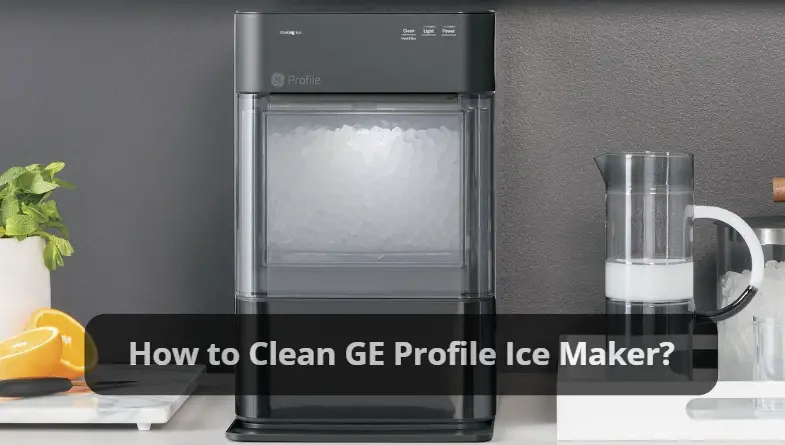
How to clean ge profile ice maker?
Table of Contents
In the realm of kitchen maintenance, ensuring the functionality and cleanliness of your ice maker is paramount. A pristine ice maker not only operates more efficiently but also guarantees the production of clean, safe-to-consume ice. If you own a GE Profile ice maker, adhering to a meticulous cleaning regimen is key to maintaining its performance. This guide will navigate you through a comprehensive, step-by-step process to clean your GE Profile ice maker, ensuring it continues to serve you with the highest quality ice.
Why Regular Cleaning is Crucial for Your GE Profile Ice Maker
Regular cleaning of your GE Profile ice maker is not just about maintaining the appliance’s aesthetic appeal; it plays a crucial role in its operational efficiency and the quality of ice it produces. Over time, mineral deposits from water can build up in the ice maker, potentially affecting its performance and the taste of the ice. Moreover, without regular cleaning, your ice maker could become a breeding ground for mold and bacteria, posing health risks. Recognizing the importance of a well-maintained ice maker is the first step towards ensuring the longevity and efficiency of your appliance.
Preparing for the Cleaning Process
Before embarking on the cleaning journey, it’s essential to gather all necessary supplies to ensure a smooth and efficient process. You will need:
- A soft cloth or sponge
- Mild dish soap
- A solution of white vinegar and water (1:1 ratio)
- A small, soft-bristled brush (a toothbrush works well)
- A clean towel
Ensure your GE Profile ice maker is unplugged and disconnected from the water supply before starting the cleaning process to guarantee your safety and prevent any electrical or water-related incidents.

Step 1: Cleaning the Exterior
Begin by wiping down the exterior of your GE Profile ice maker with a soft cloth or sponge lightly dampened with a mild dish soap solution. Pay special attention to areas where fingerprints and smudges usually accumulate. After thoroughly wiping, use a clean, damp cloth to remove any soap residue. Finally, dry the exterior with a clean towel to prevent water spots.
Step 2: Cleaning the Interior
- Remove any remaining ice from the ice maker and dispose of it.
- Take out any removable parts, such as the ice bin or tray, and wash them in warm, soapy water. Use a soft-bristled brush to gently scrub any hard-to-reach areas. Rinse thoroughly and air-dry the components before reassembly.
- With the interior exposed, apply the white vinegar and water solution using a soft cloth or sponge. Thoroughly wipe down the interior surfaces, paying close attention to corners and crevices where grime may accumulate.
- For stubborn mineral deposits, use a small, soft-bristled brush dipped in the vinegar solution to gently scrub the affected areas.

Step 3: Rinse and Dry
After cleaning the interior with the vinegar solution, wipe down the surfaces with a clean, damp cloth to remove any residue. Ensure all areas, including hard-to-reach spots, are adequately covered. Use a clean, dry towel to dry the interior thoroughly. Reassemble the ice maker once all components are completely dry.
Step 4: Reconnect and Resume Operation
Once the cleaning process is complete and the ice maker is dry and reassembled, reconnect it to the power supply and water line. Allow the ice maker to run through a few cycles, discarding the first batches of ice produced to ensure that any lingering cleaning solution or tastes are completely removed.

Additional Tips for Maintaining Your GE Profile Ice Maker
- Regularly check and replace the water filter according to the manufacturer’s recommendations to ensure the quality of ice and the longevity of your appliance.
- After each cleaning session, consider running a sanitizing cycle, if your model supports it, to further ensure the cleanliness and safety of your ice maker.

Conclusion
Ensuring the cleanliness and functionality of your GE Profile ice maker is crucial for the appliance’s efficiency and the safety of the ice it produces. By following this detailed guide, homeowners can easily maintain their ice makers, ensuring they continue to enjoy high-quality, safe-to-consume ice. Remember, a clean ice maker is the cornerstone of a healthy and happy kitchen.
FAQs
How often should I clean my GE Profile ice maker?
It’s recommended to clean it every 6 months.
Can I use bleach to clean my ice maker?
Stick to mild dish soap and vinegar. Bleach can be too harsh and leave behind harmful residues.
What should I do if my ice maker doesn’t start after cleaning?
Ensure it’s plugged in, check the power source, and make sure all parts are correctly reassembled. If it still doesn’t work, seek professional help.
Why does my ice taste bad?
Stale or contaminated water, or a dirty ice maker, can affect the taste of your ice. Regular cleaning and changing water filters can help prevent this.
READ ALSO: How to Defrost Samsung Ice Maker?
